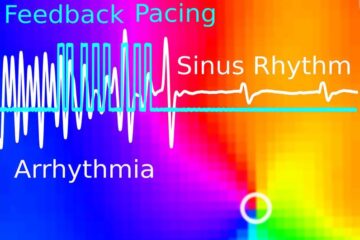Study reveals function of lipid in neuronal synapses

Yale researchers demonstrate the crucial role of a membrane lipid called phosphatidylinositol-4,5-bisphosphate (PtdIns (4,5)P2) in the communication of information between synapses in the brain, according to a study published this week in Nature.
“This study is the first to show that lowering the levels of this lipid in nerve terminals affects the efficiency of neurotransmission,” said senior author, Pietro De Camilli, Eugene Higgins Professor of Cell Biology and a Howard Hughes Medical Institute investigator.
De Camilli’s laboratory has extensively studied the mechanism underlying cycling of synaptic vesicles, the small sacs containing neurotransmitters that exchange information between neurons. Synaptic vesicles release their contents at junctions between nerve terminals by fusing with the plasma membrane where they rapidly re-internalize, reload with neurotransmitter, and are reused.
The researchers genetically engineered laboratory mice lacking the enzyme PIPK1-gamma at the synapse. This enzyme plays a major role in the synthesis of PtdIns(4,5)P2, a member of a class of lipids called phosphoinositides. The mice born without PIPK1-gamma were apparently normal, but they were unable to feed and died quickly. Studies of their nervous system revealed lower levels of PtdIns(4,5)P2 and a partial impairment both of the process of fusion of synaptic vesicles as well as of their recycling.
De Camilli said these studies provide new insight into basic mechanisms in synaptic transmission, but also have implications for medicine. For example, Down syndrome patients have an extra copy of the gene encoding the enzyme synaptojanin 1, which degrades PtdIns (4,5)P2 in the brain. Patients with Lowe syndrome, who also have mental retardation, lack another PtdIns(4,5)P2 degrading enzyme. Cancer and diabetes also can result from abnormal metabolism of phosphoinositides, De Camilli said.
“Typically, studies of synaptic transmission have focused on membrane proteins,” said De Camilli. “Only recently has the importance of the chemistry of membrane lipids and of their metabolism started to be fully appreciated. The field is still in its infancy, but rapid advancements in the methodology for the analysis of lipids promise major progress in the field and the possibility of identifying new targets for therapeutic interventions in human diseases.”
Media Contact
More Information:
http://www.yale.eduAll latest news from the category: Life Sciences and Chemistry
Articles and reports from the Life Sciences and chemistry area deal with applied and basic research into modern biology, chemistry and human medicine.
Valuable information can be found on a range of life sciences fields including bacteriology, biochemistry, bionics, bioinformatics, biophysics, biotechnology, genetics, geobotany, human biology, marine biology, microbiology, molecular biology, cellular biology, zoology, bioinorganic chemistry, microchemistry and environmental chemistry.
Newest articles

Wildfire danger to increase due to climate change
WSL Institute for Snow and Avalanche Research (SLF) researchers expect an elevated wildfire danger in the Alpine Foreland from 2040 onwards due to changing meteorological conditions. The danger currently remains…

Advanced Brain Science Without Coding Expertise
Researchers at Helmholtz Munich and the LMU University Hospital Munich introduce DELiVR, offering a new AI-based approach to the complex task of brain cell mapping. The deep learning tool democratizes…

Gentle defibrillation for the heart
Using light pulses as a model for electrical defibrillation, Göttingen scientists developed a method to assess and modulate the heart function. The research team from the Max Planck Institute for…





















